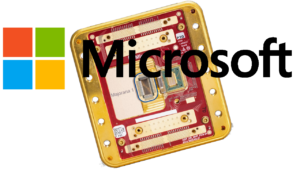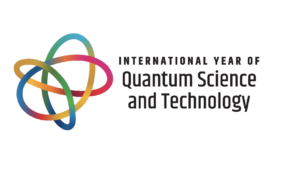About a month ago, I wrote a post focused on D-Wave Systems, a Canadian firm that claims to have developed a practical quantum computer [Quantum Computing — Not Coming Soon to a Store Near You]. I noted that there didn’t seem to be very much “practical” about the Orion computer that was unveiled in February in Silicon Valley. My reaction, however, was mild in comparison to how others have responded to D-Wave Systems’ demonstration. New York Times writer Jason Pontin discusses the uproar that D-Wave’s demonstration created [“A Giant Leap Forward in Computing? Maybe Not,” 8 April 2007].
“Did D-Wave Systems achieve the incredible — a startling advance in computing that would radically expand human capacities for industrial activity and scientific discovery, long before experts believed it possible? It says it did, and many concurred. According to the company and publications like The Economist, D-Wave, a start-up company in Burnaby, British Columbia, demonstrated ‘the world’s first commercial quantum computer’ in February. Something certainly happened. At a crowded event at the Computer History Museum in Mountain View, Calif., in the heart of Silicon Valley, a proud and beaming Geordie Rose, the company’s founder and chief technology officer, showed how the Orion computer could search for a protein in a database and find the closest match, figure out the optimal seating arrangement for wedding guests and solve a Sudoku puzzle.”
As noted in my earlier post, the great promise of quantum computing is processing speed. Theoretically quantum computers should be able to perform calculations at speeds unimaginable by today’s standards. Problems that could take millennia to solve today would take only minutes to solve. The fact that Orion didn’t perform at these speeds seems to be at the heart of the controversy.
“Quantum computing is powerfully glamorous stuff: it partakes of the unworldly weirdness of quantum mechanics, and it promises a new class of quantum algorithms that could solve certain problems exponentially faster than any computer today. If a ‘practical quantum computer’ — as Dr. Rose, who has a doctorate in physics, often describes Orion — had been built and demonstrated, it would be a wonderful thing: analogous, according to quantum computing’s most ardent promoters, to the development of the transistor, or even the harnessing of electricity. But as soon as D-Wave completed its demonstration, there were indignant objections from the people who know quantum computing best: the scientists who spend their lives thinking about such a machine. That’s because most academics believed that it would be many more years before anyone could construct one. What was more frustrating, D-Wave provided no evidence to back up its claims: it has released only the sketchiest details about the inner workings of Orion. Something solved the problems at the demonstration, but it might not have been a quantum computer. Scott Aaronson, a theoretical computer scientist at the Institute for Quantum Computing at the University of Waterloo in Canada, fired the first shot. He wrote in his much-read blog, called ‘Shtetl-Optimized,’ that Orion would be as useful at problem-solving as ‘a roast beef sandwich.’ In an e-mail message to me, Dr. Aaronson denounced Orion as ‘hype.’ He said that he could not ‘think of any interpretation under which’ Dr. Rose was ‘telling the truth.’ Many quantum mechanics — as some like to call themselves — agree. ‘D-Wave is misleading the public by calling their device “a practical quantum computer,”‘ said Umesh Vazirani, a computer science professor at the University of California, Berkeley. ‘The whole point of quantum computing is achieving a large speedup over classical computers, something that D-Wave hasn’t accomplished.’ Dr. Rose dismissed such criticism. He characterized D-Wave’s approach as bluntly commercial: he expects the marketplace to endorse Orion and doesn’t care about evaluations in peer-reviewed journals.”
This spectacle has all of the elements the cold fusion debate had decades ago when fantastic claims about experimental results were made and later debunked. We are way too early in this current circus act to know where the truth lies. The debate, however, will continue to be heated:
“The high emotions inspired by the D-Wave controversy derive, perhaps, from the almost metaphysical allure of the field, an allure that has existed since the physicists Paul Benioff and Richard P. Feynman proposed the idea of quantum computing in the early 1980s. … For instance, a practical quantum computer could easily factor large integers, allowing them to break most cryptographic systems. A quantum computer could also simulate the behavior of nanosized structures like drug molecules; such ‘quantum simulations’ would mean that biotechnologists could model drugs outside of a laboratory, potentially helping them to develop new therapies. … But real, useful quantum computers, for all their interest and potential, have proved fiendishly difficult to build. To date, quantum computers have been more-or-less successful lab experiments.”
As noted in the earlier post, D-Wave’s system only operates at extremely low temperatures, which means the computer must be surrounded by a roomful of cooling equipment.
“D-Wave says it has succeeded where others have failed by using a simple design, derived from technologies already used to make standard computer chips. The company describes the Orion as built around a chip made from a superconducting metal called niobium, which becomes a superconductor when chilled to nearly minus 273 degrees Celsius in a bath of liquid helium.”
And what has this simple design and expensive equipment managed to achieve? According to detractors, not much:
“Does Orion work as advertised? No one knows, except for the people at D-Wave. According to the most skeptical of D-Wave’s detractors, because Orion can function as a slow analog computer, it’s possible that Orion was not really performing quantum operations at all when it was demonstrated at the Computer History Museum. Dr. Rose concedes that his machine is still primitive. ‘In terms of the actual time it takes to solve problems, Orion as it currently stands is about 100 times slower than a PC running the best algorithms,’ he says. But he argues that the demonstration in February showed that quantum computing was not merely a research project, and proved that there was a real and imminent value to businesses.”
Investors who have laid down a reported $44 million to support D-Wave Systems are certainly hoping that their money buys something more than a computer that operates 100 times slower than traditional computers. D-Wave has reportedly said it will let outsiders start poking around the computer later this year. These examinations are likely to better reveal whether we are on the verge of quantum computing or at the end of another cold fusion episode.




